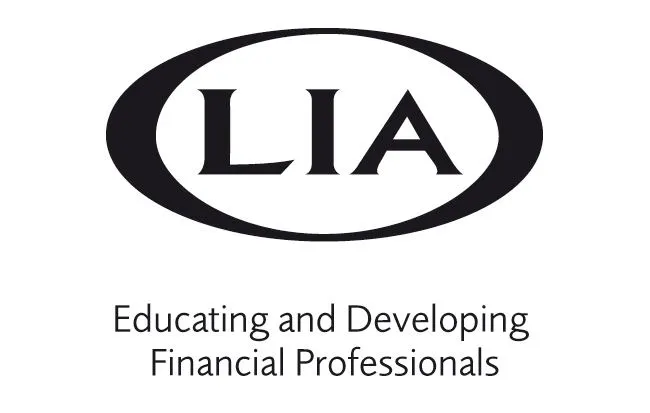One of the ways Merriam-Webster defines the word cycle is a course or series of events or operations that recur regularly and usually lead back to the starting point. And when the word vicious is placed in front of it, it becomes a chain of events in which the response to one difficulty creates a new problem that aggravates the original difficulty.
When a person’s physical, mental, or financial health suffers, that’s when they may find themselves a part of a vicious cycle. If this cycle continues, the impact on their overall wellness will suffer. This vicious cycle is difficult to break, but as a financial planner, you have the power to help.
Financial Stress and Its Impact on Physical Health
For financial professionals, stress related to finances seems like the obvious place to begin when addressing the cycle of wellness. But curiously, we don’t always know when we are stressed. Stress can come on gradually, virtually undetected, until it reaches full intensity, resulting in feelings of emotional or physical tension. It can come from any event or thought that makes you feel frustrated, angry, or nervous.1
Stress is our inherent physiological response to threats. Physiological stress is essentially the body’s reaction to the fight or flight response. When the brain receives a stressor signal, it tells the body to prepare—to fight or flee.
Most people have experienced some level of financial stress. In fact, stress in small amounts can be positive—it can help you out of a dangerous situation or provide motivation to complete a task.
But higher levels over extended periods of time may manifest beyond general feelings of uncertainty and present physically, having a negative impact on your health. Unfortunately, the stress we feel because of financial challenges is often long-term, and 65 percent of adults note money as a source of stress. 2
The impact on physical health that results from these high stress levels can be quite severe and could result in frequent aches and pains, headaches, stiff jaw or neck, tiredness, trouble sleeping or sleeping too much, upset stomach, and weight loss or gain.1
Further compounding these health impacts is the increased high-risk behavior that can result when people feel stressed including the potential for alcohol and drug abuse and overeating.
Financial stress can also damage health when limited financial resources cause a delay in seeking medical treatment. About four in ten U.S. adults say they have delayed or gone without medical care in the last year due to costs and about a quarter say they or a member of their household have not filled a prescription, cut pills in half, or skipped doses of medicine because of the cost.
And worries about high healthcare costs are not limited to those without health insurance. About one-third of insured adults worry about affording their monthly health insurance premium, and 44 percent worry about paying deductible costs before health insurance kicks in.3
These circumstances result in the vicious cycle of financial stress leading to health issues which can worsen money challenges by increasing medical expenses, making good financial and medical decisions even more difficult. What comes next only makes matters worse when mental health is impacted because of deteriorating finances and physical health.
The Role Financial Stress Plays in Mental Health
We experience financial stress mentally as well as physically. A recent survey by Bankrate.com found that 42 percent of those surveyed cited money concerns as having a negative impact on their mental health. Everything from dealing with debt to managing money was linked to decreased psychological well-being, leading to anxiety, stress, worrisome thoughts, loss of sleep, and depression.4
When asked about what actions trigger their financial stress, the same survey revealed the top three responses of not having sufficient emergency savings (57 percent), being able to pay for everyday expenses (56 percent), and being in debt (48 percent).
Ironically, cost is one of the primary barriers keeping people from accessing support for mental health issues. Another barrier is the stigma often attached to both poor mental health and poor financial health—further exacerbating the hard-to-break cycle.
The consequences of mental health challenges fuel the cycle of financial stress and physical health decision-making. In other words, financial stress is associated with mental health challenges, which impair financial decision-making, further worsening the financial situation. This in turn increases stress, which then worsens mental health.
Financial Professionals Can Help Break the Cycle
Clearly, this vicious cycle of poor financial, physical, and mental health has dire consequences if left unchecked. Fortunately, financial professionals are in a great position to give clients the confidence they need to get their financial, mental, and physical health back on track.
By learning how these three aspects of health are intertwined, financial professionals are bringing the concept of financial wellness into their practice.
There are several things to consider when incorporating wellness into your financial planning process.
- Pay attention to the underlying money story of clients who are struggling to meet their financial planning goals. Financial psychology plays an inherent role in the fulfillment of financial plans. Listening to clients empathetically will ensure you provide the specific guidance they need or help you make a referral when deeper support is required.
- Embrace technology to efficiently deliver a more robust experience. Consumers view technology as a means to create personalized discussions about their financial future. Use technology to help guide behavior change and increase financial well-being.
- Engage clients through holistic financial planning. A holistic approach enables clients to account for their entire circumstances, not just their financial situation, giving them the support they need to break the vicious cycle.
Demonstrate to your clients that ongoing financial planning gives them the flexibility to change course as their life evolves and keep financial situations from causing other aspects of their health to spiral out of control. Clients should understand that their plan will be continually evaluated and updated based on what’s happening in their world, good or bad.
Looking at the Big Picture to Ensure Client Well-being
The challenges that result from the connection between poor physical, mental, and financial health are not sustainable. They lead to a spiral that has dire consequences if the cycle is not broken.
Your clients may think they are the only ones who can see their entire financial picture but your expertise can provide the assistance they need to get help with their financial burdens. Providing personalized financial planning that considers their values, future goals, current health, family situation, and other variables that are unique to them will help them get back on track to a life of physical, mental, and financial well-being.
Difficulties with money and the accompanying emotions can be hard to talk about. Financial professionals who want to engage with clients in the midst of this vicious cycle can borrow some techniques from therapists to make the conversation easier and more productive.
DISCLAIMER: The eMoney Advisor Blog is meant as an educational and informative resource for financial professionals and individuals alike. It is not meant to be, and should not be taken as financial, legal, tax or other professional advice. Those seeking professional advice may do so by consulting with a professional advisor. eMoney Advisor will not be liable for any actions you may take based on the content of this blog.
Sources: Emily Koochel, eMoney Advisor, 16th of August 2022
How we help
We can help take the effort out of this for you by demonstrating how this would work for you and your family and providing you with one cohesive Holistic Lifestyle Financial Plan.
You can arrange a meeting by clicking here to access my diary, email info@smartfinance.ie or call 087 8144 104.







